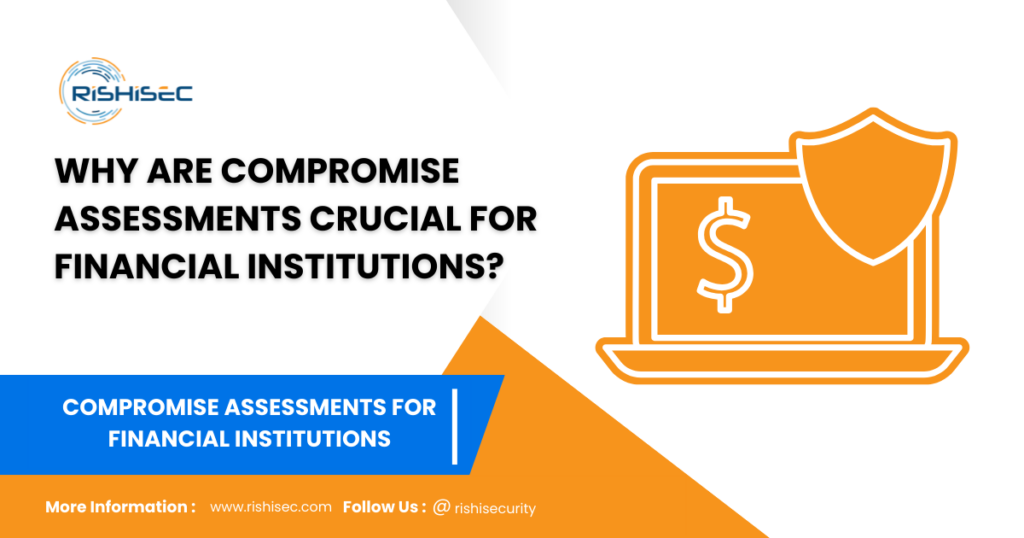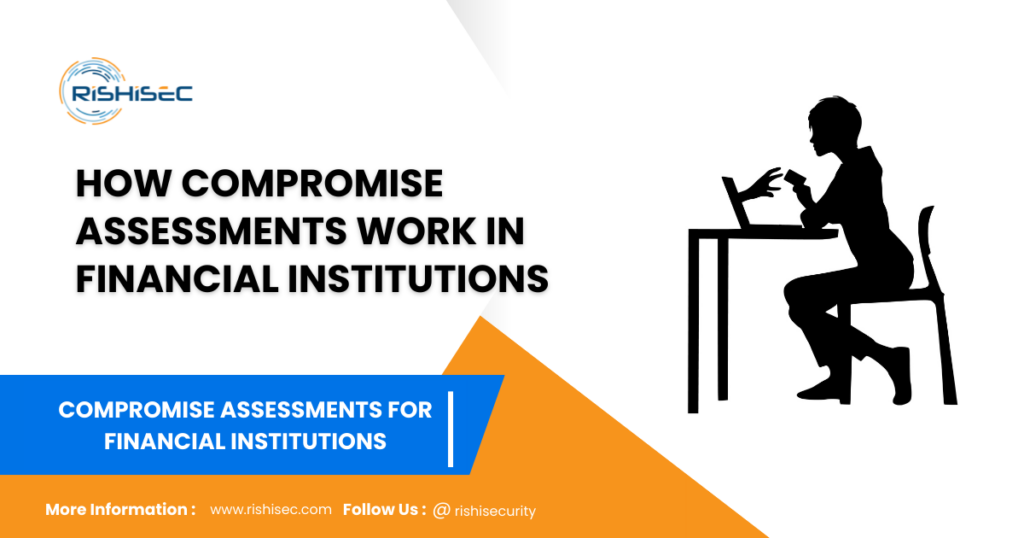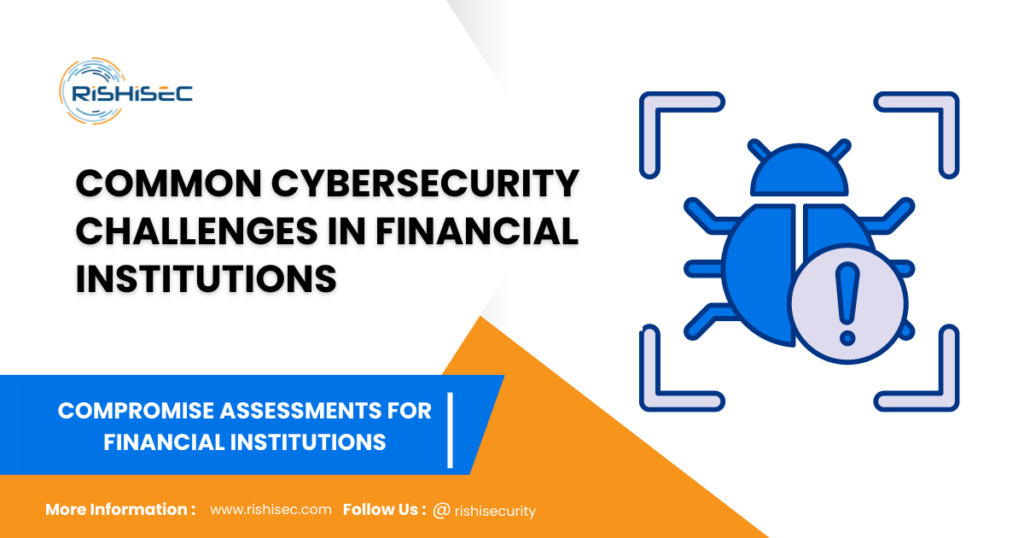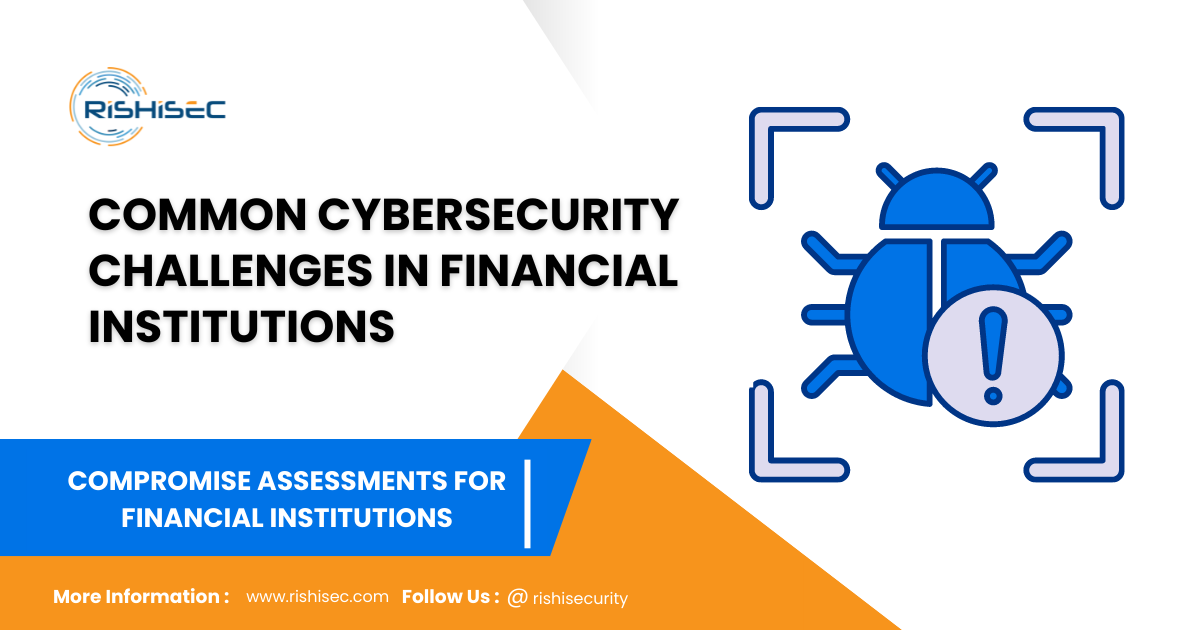Contents
Compromise Assessments for Financial Institutions
The financial services sector is among the most targeted industries when it comes to cyber threats. With an increasing reliance on digital technologies, financial institutions face unprecedented risks from advanced persistent threats (APTs), insider threats, and sophisticated cyber-attacks. To ensure operational resilience, financial institutions need to prioritize Compromise Assessments (CAs) as a core component of their cybersecurity strategy.
Why Are Compromise Assessments Crucial for Financial Institutions?

Crucial for Financial Institutions
The financial industry is responsible for safeguarding sensitive information and maintaining trust with customers. Any breach, no matter how minor, can lead to severe financial losses and damage the institution’s reputation. While traditional cybersecurity measures like firewalls and intrusion detection systems are important, they are not foolproof against emerging threats. This is where compromise assessments become critical.
Compromise Assessments go beyond traditional security checks, providing a proactive approach to identifying security incidents that may have gone undetected. For financial institutions, CAs provide several key advantages:
- Early Detection of Threats: CA teams are skilled at identifying subtle signs of compromise, such as anomalous user behaviors, lateral movement, or undetected malware.
- Post-Breach Analysis: A well-conducted compromise assessment reveals the full scope of any breach, including how attackers gained access and which data or systems were compromised.
- Continuous Monitoring and Risk Mitigation: By conducting regular CAs, institutions can keep pace with evolving threats and ensure that their security measures remain up to date.
In a world where financial institutions are top targets, CAs provide an indispensable tool for maintaining the integrity of operations, protecting customer data, and preventing potential breaches.
How Compromise Assessments Work in Financial Institutions

Work in Financial Institutions
A compromise assessment involves several steps to ensure a comprehensive evaluation of the institution’s cybersecurity posture. Here’s a detailed breakdown of how it works:
- Initial Investigation and Discovery: The CA team begins by investigating the institution’s network environment, analyzing logs, and scrutinizing system activity to identify suspicious patterns.
- Threat Hunting and Forensic Analysis: Security experts use advanced tools to perform forensic analysis, looking for evidence of breaches, compromised systems, or malicious activity.
- Remediation and Response: If a threat is detected, immediate steps are taken to isolate and neutralize the threat. The team works closely with the institution’s internal security team to ensure effective remediation and recovery.
- Reporting and Continuous Monitoring: After the assessment, a detailed report is provided, outlining the findings and recommended actions. Continuous monitoring may also be recommended to detect future threats in real-time.
In today’s dynamic threat landscape, no financial institution can afford to ignore the potential for undetected compromises. By implementing regular compromise assessments, institutions can enhance their security posture and minimize the risk of future attacks.
Common Cybersecurity Challenges in Financial Institutions

While CAs are essential, financial institutions still face unique challenges that can complicate their security efforts. Some of these challenges include:
- Complex Regulatory Environment: Financial institutions must comply with stringent regulations (e.g., PCI DSS, GDPR, GLBA), and failure to do so can result in hefty fines.
- Insider Threats: Financial institutions are particularly vulnerable to insider threats, with employees potentially gaining unauthorized access to sensitive information.
- Increasing Sophistication of Attacks: Cybercriminals are using more advanced tactics, such as spear phishing, ransomware, and APTs, making it difficult for traditional cybersecurity measures to keep up.
- Digital Transformation: As financial institutions continue to adopt new digital technologies, they expand their attack surface, making them more susceptible to cyber threats.
These challenges underscore the need for a comprehensive approach to cybersecurity—one that includes regular compromise assessments to address both external and internal threats.
How to Integrate Compromise Assessments into Your Cybersecurity Strategy
Financial institutions should integrate compromise assessments into their broader cybersecurity strategy to enhance their overall defense mechanisms. Here’s how to get started:
- Define Your Objectives: Before conducting a CA, financial institutions should clearly define what they aim to achieve. Whether it’s detecting insider threats, assessing vulnerabilities, or evaluating the effectiveness of existing security measures, a clear goal will ensure a more focused assessment.
- Engage Experienced Cybersecurity Partners: Working with experienced cybersecurity professionals is crucial. These experts bring the specialized knowledge and tools needed to thoroughly assess an institution’s environment.
- Implement Continuous Monitoring: A single assessment is not enough. Financial institutions must implement continuous monitoring solutions to stay ahead of threats and maintain a strong security posture.
- Invest in Employee Training: Even with the best tools and assessments in place, human error remains one of the biggest vulnerabilities in cybersecurity. Regular training ensures that employees understand the importance of cybersecurity and how to identify potential threats.
By following these steps, financial institutions can establish a robust, proactive approach to cybersecurity that prioritizes risk mitigation and data protection.
Real-World Impact: Case Study of a Financial Institution’s CA Success
In 2023, a major international bank with over $500 billion in assets conducted a compromise assessment after a minor security anomaly was detected. Although the bank’s security tools didn’t initially flag any major issues, the CA uncovered a previously undetected advanced persistent threat. The attackers had gained unauthorized access to the bank’s systems through a compromised vendor, potentially exposing customer data.
Thanks to the CA, the bank was able to quickly isolate the compromised systems, remove the threat, and enhance its vendor security policies. Without the assessment, the attackers could have remained hidden for months, causing irreparable damage.
This case underscores the importance of compromise assessments in identifying and neutralizing threats before they escalate into full-blown breaches.
The Future of Cybersecurity in Financial Institutions
As cyber threats continue to evolve, the role of compromise assessments will only grow in importance. Financial institutions must prioritize these assessments to stay ahead of attackers and protect their critical assets. The combination of proactive threat hunting, forensic analysis, and continuous monitoring gives institutions the ability to detect and neutralize threats before they cause significant harm.
Investing in compromise assessments is not just about responding to breaches—it’s about preventing them.
CTA
Financial institutions can’t afford to be complacent in today’s threat landscape. Protect your organization and your customers by integrating regular compromise assessments into your cybersecurity strategy.
Ready to safeguard your financial institution from advanced threats? Try SentryCA for free and experience the power of real-time threat detection and response. Our expert team will guide you through a comprehensive compromise assessment, ensuring that your institution remains protected.
Start reading our this post, Performing a Compromise Assessment with ELK: An In-Depth Guide


